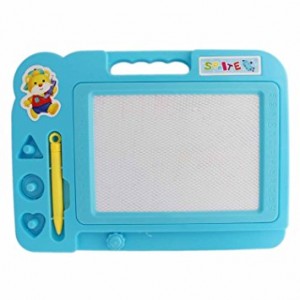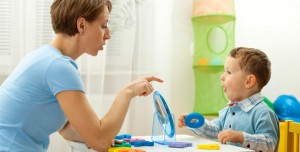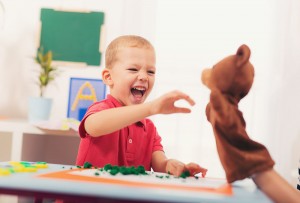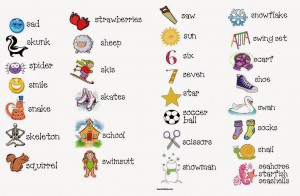
Articulation Therapy: Four Go-To Materials
Articulation Therapy: Four Go-To Materials
Articulation Therapy – The inability to pronounce sounds correctly in speech can be corrected through articulation therapy. It must be multisensorial as well as fun! (Read more about these basics in the article here). However, it requires precision of placement, good coordination and movement of articulators. There are several items that would make an articulation therapy effective yet interesting. When saying each slowly, think about where your lips and tongue are positioned and what they are doing. Also, try to feel where the air from your throat is going while saying each sound. My four go-to materials for articulation therapy are:
1. Mirror
The power of a mirror cannot be undermined in articulation therapy! It provides good feedback to the child/individual about the placement of the articulators.
I’d like to have mirrors of different sizes available. Small ones that can be used under the nose help to get the child to see the mist on it forming from nasal sounds (like /n/). Mid-sized ones are useful to show the mouth or whole face during the production of the sound. This is the most important mirror and is a must when working on therapy. A large one for the whole body when we are having a lot of movement fun but also are working on sound production!
Read a detailed blog on Articulation Therapy: A Beginner’s Guide
In tele-practice, the use of a mirror is replaced by the camera in the computer or tablet. However, parents should use the mirrors for practice at home.
2. Puppets.
These are a brilliant way to make a session fun and many times interactive. Puppets or even stuffed toys where the mouth can move are ideal. They help a child see the mouth movement easily. If a tongue is a part of the face, that makes it even better. However, many times just taped pink paper can do the trick!
Using a puppet or a toy character that the child likes can be even more encouraging and engaging for the child in the session.
-
Drawing board.
 A drawing board, (chalkboard or magic) slate, paper with pen or pencil are used to do several things in an articulation therapy session. They help to (a) Draw out tongue positions in the mouth, (b) draw the words that are to be said, and even help (c) create quick games.
A drawing board, (chalkboard or magic) slate, paper with pen or pencil are used to do several things in an articulation therapy session. They help to (a) Draw out tongue positions in the mouth, (b) draw the words that are to be said, and even help (c) create quick games.
If the child is using the computer or tablet for practice, the drawing or paint app can be used between the therapist/parent and the child. In tele-practice, a whiteboard on the computer is mostly used. It adds another level or dimension to therapy since you can add board games to play or even colorful pictures from the net and then draw over them to create fun games while practicing sounds.
-
A word list:
After a sound is established, the next step is to work on the sound at the word level. A word list is created for the target sound (i.e. the sound that is being worked on). The word would have the sound in the beginning, middle and/or end. This list is wonderful for practicing the sound, and, it can be incorporated in games or used for drills.
How do I make a list for articulation therapy, you ask? Here are different ways to do the same.
-
Use the therapists:
This is the easiest beginning for the same. It gives you, the parent, the idea of how the list should be and what it should focus on. It also strengthens the target sound in the words that have already been practiced in the speech therapy session. However, you must move from this list to others also!
-
Build one with words your child knows:
Make a list of words with the target sound that your child knows. Build the list with your child! Make it a fun activity. Take guidance from your speech therapist to know where the target sound should be in the word (e.g. beginning, middle or ending).
For example – The parent can ask “Let’s say words that begin with sound /b/” – Child says “bus, ball, bubble”. These will then be added to the list. Add more words you know the child knows – e.g. brown, blue, bus. Keep the list with meaningful words. Preferably simple words at first. Move to complex ones, over time. Create similar lists with the sound in the middle or end (based on whether it is required).
-
Making up words (meaningless words):
To practice the sound, even meaningless words can be used. They can be such as ‘bup, bip’ for the /b/ sound. The word lists can be a lot of fun for a child if used well in a session!
-
Online materials:
Websites, Pinterest have a lot of lists available that can be used. You must ensure that the list remains useful for the child, relevant to the understanding of the child as well as fun!
Word lists are used to teach the sound beyond syllable level. There would be a need to practice along sentence and story level and then within conversations also. Words from the list can be incorporated at each of these levels.
***
Articulation therapy can use many more materials. It’s important to keep it engaging and fun for the child! Let these materials be a beginning for you and the child!
***
Please note that these are basic guidelines for articulation therapy. A child’s individual assessment results would guide a speech therapist for specific inputs which may include working on listening to sound and sound pairs or practicing specific sounds before the other (different from above) etc.
Subscribe with us to receive articles related to Articulation therapy in your inbox! Leave a comment or feedback on the article! We’d love to hear from you 🙂
- What is speech therapy and what Speech Therapist Do? - December 22, 2022
- 5 Simple Ideas to Make Flashcards Fun - June 28, 2018
- Should I use ‘NO’ with my child? - June 24, 2018




Leave a Comment
(0 Comments)